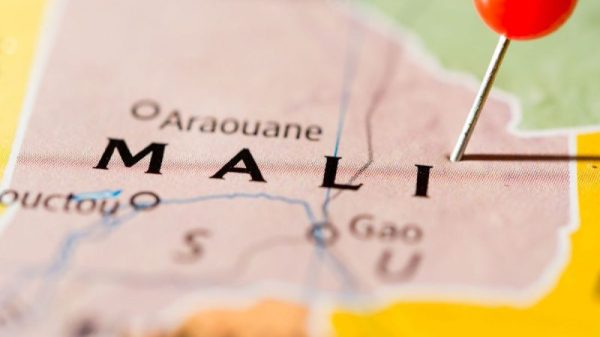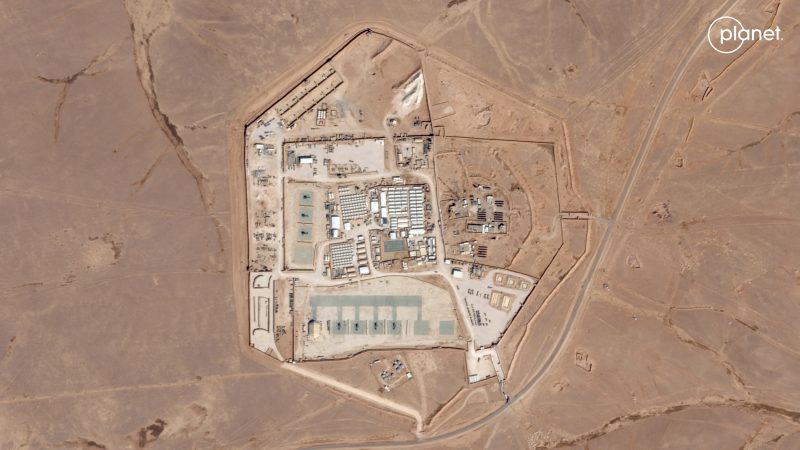U.S. forces probably did not detect the approach of the Iranian-made drone that killed three American soldiers last week at a remote base in Jordan, and there was no air defense system on site capable of shooting it down, the military’s initial assessment of the attack has found.
The early findings, which have not been previously reported, indicate that the drone may have been missed “due to its low flight path,” a U.S. defense official with direct knowledge of the assessment told The Washington Post. Additionally, this person said, the base, known as Tower 22, was not outfitted with weapons that can “kill” aerial threats like drones, and instead relied on electronic warfare systems designed to disable them or disrupt their path to a target.
A common strategy among drone operators and other pilots seeking to minimize or evade radar detection is to fly low to the ground. Another U.S. official affirmed the military’s belief that the drone flew too low to be detected. Both officials, like some others, spoke on the condition of anonymity to discuss a sensitive and ongoing investigation. Defense officials have stressed that assessments can change as investigators learn more.
Taken together, the preliminary findings appear to undermine previous assertions that U.S. air defenses mistook the attacking aircraft for an American drone returning to the base about the same time, and they raise new questions about the Pentagon’s ability to keep pace with the threats facing U.S. personnel deployed across the Middle East since the war in Gaza set off an acceleration of violence.
U.S. Central Command, which oversees military activity throughout the region, has declined to say whether officials believe the militants responsible had knowledge of the base’s limited defenses.
In a statement, Pentagon spokeswoman Sabrina Singh said Central Command continues to review the attack. “For operations security reasons, we won’t discuss specific force protection measures or potential posture changes,” she said. “However, as always, we are committed to taking necessary measures to safeguard our forces [who serve] in harm’s way.”
Tower 22 is located at the nexus of Jordan’s shared border with Syria and Iraq. It functions as a support site for another U.S. outpost, the isolated Tanf garrison in Syria, situated along a key highway connecting Tehran to Damascus. From Tanf, U.S. forces have sought to disrupt Iran’s efforts to supply weapons and materiel to partners and proxies in Syria and beyond.
The Jan. 28 attack in Jordan killed three Army reservists from Georgia, the first American deaths from hostile fire since Israel’s war in Gaza triggered repeated attacks on U.S. positions in Iraq and Syria by groups affiliated with Iran. There have been at least 168 such incidents since mid-October, according to Pentagon data.
At Tower 22, dozens of other personnel were wounded in the blast, which struck a housing unit during the early morning while many of the 350 troops deployed there were in bed asleep. In response to the deadly violence, U.S. warplanes on Friday struck more than 85 targets in Iraq and Syria that military officials said were associated with the Quds Force, a unit of Iran’s Islamic Revolutionary Guard Corps, and local militias it supports.
Although Tower 22 was outfitted with “multiple” electronic warfare systems capable of taking drones offline, it had limited means to protect itself. The defense official with direct knowledge of the military’s early assessment said the outpost was deemed a relatively low-threat environment. “This was based on the vast majority of the threats and 99 percent of the [Iranian-proxy] attacks being against facilities in Iraq and Syria,” the official told The Post.
The base’s defensive posture has changed in the attack’s aftermath, the official said, but declined to elaborate.
“We are not waiting for the investigation to be complete to implement changes from lessons learned in the tragic attack on Tower 22,” the official said.
While the U.S. military has long deployed systems such as the Patriot and C-RAM (short for Counter Rocket Artillery Mortar) to defend American positions against enemy attack, there is a limited inventory of those weapons and officials have had to prioritize their deployment based on the perceived threat facing specific locations. At the same time, the Pentagon has scrambled in recent years to develop new means for protecting installations from rapidly evolving drone attacks that can evade traditional air defense.
An immediate takeaway from last week’s deadly attack in Jordan, the second U.S. official said, is the need for better drone-detection systems that can give American personnel more time to identify and destroy such threats before they can put lives at risk.
Experts note that there are other solutions, known as passive defenses, that can be used to obscure or shield against aerial attacks. Anti-drone nets, for instance, and other barriers such as chain fences have been installed overhead at vulnerable sites in Ukraine to block or detonate drones before they can hit their intended targets.
Ideal air defense strategies, experts say, incorporate a mix of systems, sensors and passive solutions.
The containerized housing structures at Tower 22 appear to be the standard units typically found at U.S. facilities overseas. They are made of relatively thin metal that is not designed to withstand blasts on their own, and can be easily identified on commercial satellite imagery and services such as Google Maps.
Officials have not said whether protection was installed above the units before the attack. Concrete barriers positioned on the ground among the housing units did help to mitigate the explosion, officials said.
“You’ve got to continuously refine your defenses based on the threat,” the second official said, adding that additional recommendations are likely to come from an analysis of the attack.
Iran has proliferated drones of various types and sizes, including Shahed one-way attack drones in use by Russia’s military in Ukraine. Tehran also has provided unmanned aerial vehicles to its aligned militias in the Middle East. One official described the drone used in the Jordan attack as a Shahed-101, a weapon that used by militants in Iraq. The Pentagon has not publicly identified what type of system was used.
Earlier threat assessments that concluded Tower 22 faced a lower risk of attack meant the base appeared not to have been “outfitted with other active countermeasures similar to what other locations across the region had been,” said Paul Lushenko, an assistant professor and director of special operations at the U.S. Army War College who has studied and written about drone warfare.
“What we’re recognizing here in real time is the emergence of this vulnerability from the aerial domain that we have to think about more deliberately, and that this sort of outpost may not be protected as well going forward,” he said.
The military should consider a wider range of passive measures to combat drones, he said, including ways to physically block them even if they manage to evade missile defenses.
“We ought to consider something like that, certainly over some of these locations that are vulnerable and have our most precious asset, which is our soldiers,” Lushenko said.




























